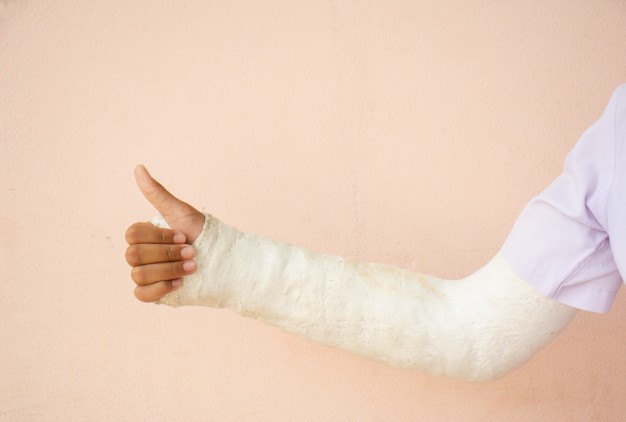Casts support and protect injured bones and soft tissues but even a cast can’t do its job without proper care. Casts hold the bones at their place while they heal from fractures and breaks, and also reduce the pain and swelling. In some cases, casts are applied following a surgery, where a doctor places the pieces back together in the right position or adds certain support via screws and plates.
Splints provide lesser support than casts. However, these can be adjusted to accommodate swelling from injuries much easier than enclosed casts. In case of injury, your doctor takes ca all on what type of support would be best for your case. Your doctor will explain if any restrictions are required on using the injured arm or leg while it is healing. You have to carefully follow the instructions to make sure your bone heals properly. You have to keep your cast in good condition, which will help in speedy recovery. There are two main types of casts:
Plaster casts: These are easier to mold for some uses, compared to fiberglass casts. The plaster casts are also less expensive.
Fiberglass casts: These casts are much lighter than the plaster casts. Also, X- rays penetrate fiber casts better than plaster casts, making it easier for your doctor to examine your injured bone while you are still wearing the cast.
Taking care of your Cast
- If you have a plaster cast, you should rest for a few days after the cast has been put on to make sure it fully dries.
- Keep the injured leg or arm elevated for the first few days, as this will help stop swelling.
- You should regularly move your fingers and toes to keep blood circulation normal.
- Protect your cast from water if it is not water-resistant. You can put plastic bags around it and seal it with a rubber band when having a shower.
- In case you have a water-resistant cast, you may be able to get it wet but consult with your doctor first. Once wet, you should rinse it with clean water.
- You should keep the inside of the cast clean by keeping food, dirt, lotions, etc. away from it.
- Don’t put a foreign object inside the cast as it can scratch the skin. They can also cause a rash or infection.
- If the cast is on your foot, you should not walk directly on it. You can use plaster boot and crutches.
When do you call your Doctor, in case of casts
You also should alert your doctor if you have:
- A fever (higher than 100 F)
- Numbness, tingling or burning, in the injured limb.
- Sores under the cast
- Cold or pale skin
- Wet cast that won’t dry
- A cast that’s too tight or too loose
- Red or raw skin around the cast
Early rehabilitation is an important aspect of the treatment after a cast is removed. This helps encourage the recovery process and also helps prevent a re-injury occurrence and chronic problems. Physiotherapy ensures you well being by improving the strength and flexibility of your body part, helps you retrain your balance, and then return to activity within a few weeks. Post the cast being taken off, you would need physiotherapy to ensure your muscles start moving normally again. Physiotherapy after a cast is strongly advised to ensure your limbs can act as normally as they would before a cast was placed and restricted your movements.
Still have questions? Come reach us at Orthocure clinic in our four locations in Gurgaon. We have the best Orthopaedic Doctors, and the only qualified Chiropractic in town, beyond a number of specialist physiotherapists that provide an integrated treatment for your pain and rehabilitation.
Disclaimer
This information should not be used as a substitute for professional diagnosis and treatment as this is for informational purposes only. One must consult their healthcare provider before making any healthcare decisions. Any damage, loss or injury suffered by an individual as a result of reliance on the information contained on this site is neither the responsibility nor the liability of Orthocure Clinics.





